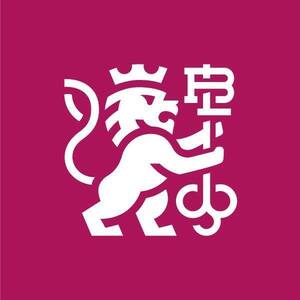CDTO Campus CEO: "Digital leaders in the public sector are about strategic thinking, vision, and the ability to achieve set goals"
Galyna Pustova - on Ukrainian experience, digital transformation and projects not for ticking boxes

In 2020, Ukraine became one of the first countries in the world to introduce the position of Chief Digital Transformation Officer (CDTO) in the public sector. The idea was ambitious: to form a new type of manager capable not just of implementing digital tools, but of transforming the logic of interaction between the state and its citizens. It quickly became clear, however, that neither traditional universities nor existing educational programs or courses were preparing such specialists – even though the demand for digital transformers continues to grow.
Mykhailo Fedorov, Vice Prime Minister for Innovations, Development of Education, Science and Technologies – Minister of Digital Transformation of Ukraine, together with Valeria Ionan, Deputy Minister for Eurointegration at the Ministry of Digital Transformation of Ukraine, initiated the creation of CDTO Campus – a national educational project for training digital leaders. This is where those who drive digital change in government bodies – central executive authorities, regional state administrations, and local communities – come to learn.
Mind spoke with Galyna Pustova, СЕО of CDTO Campus, about how and why the project was launched, why digital transformation is not actually about IT, who the state sees as its talent pool in this area, and how Ukraine’s educational experience could benefit the world.
Who Are CDTOs and Why Does Ukraine Need to “Grow” Its Own Digital Leaders?
- When the government came up with the idea of launching CDTO Campus, was it a strategic decision or a reaction to a crisis that had already taken shape?
- In 2020, the Ministry of Digital Transformation of Ukraine became one of the first in the world to introduce the position of Chief Digital Transformation Officer (CDTO) at the state level. This was a completely new role for Ukraine, and universities didn’t train such specialists. There were also no dedicated programs or courses available for them.
To build its own talent pool, the Ministry decided to create a training system. That’s how the CDTO Campus emerged – initiated by Mykhailo Fedorov, Vice Prime Minister for Innovations, Development of Education, Science and Technologies – Minister of Digital Transformation of Ukraine, along with Valeriya Ionan, Deputy Minister for Eurointegration at the Ministry of Digital Transformation of Ukraine.
It wasn’t a reaction to a crisis. It was a strategic move that allows Ukraine to implement digital transformation at all levels of government.
- And how long will it take to go from 62 to 1,500 CDTOs?
- Currently, Ukraine has 62 appointed CDTOs in central executive authorities. More than 1,200 local digital leaders are also working in their communities.
In just over a year, 821 people have graduated from CDTO Campus. These include acting CDTOs as well as new professionals starting their work in digital public service transformation.
Reaching 1,500 digital transformation leaders is an ambitious goal. It’s the target CDTO Campus has set to create a strong talent pipeline and ensure the public sector is staffed with qualified professionals.
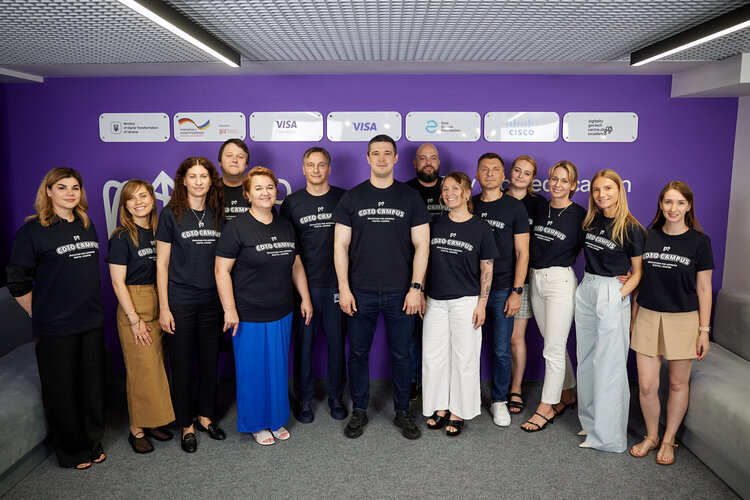
- Who are CDTOs – Chief Digital Transformation Officers – in the Ukrainian context? What exactly is their role in transforming the country?
- In Ukraine, a CDTO is not just a technical specialist rolling out new technology. A CDTO is a strategic leader who understands the purpose and specifics of digital transformation in the public sector.
We were among the first to introduce this role. While other countries have CIOs or CTOs, their function is different – they usually manage the digitization of existing services, for example, turning a paper form into an online one.
But in Ukraine, we’ve taken a different approach. We don’t just digitize outdated processes – we rethink them entirely. If a service is complex and unclear, we don’t simply move it online. We redesign it from the ground up.
This often means changing legislation and reengineering service design. Our CDTOs are not task executors – they are transformational leaders. It’s not a top-down model where someone hands down a technical task. Here, digital leaders are the ones initiating change.
- Why was there a need to create CDTO Campus?
- Ukraine leads the world in terms of public trust and use of digital services. People genuinely rely on them.
I remember one of our partners in Tallinn, who oversees digitalization for a large region, asking me to show him how our “Marriage Online” service works. I generated the certificate, and he said, “You're smiling? I’ve never seen anyone smile while using a government service!”
When public services don’t frustrate but instead delight people, they want to be part of the system. That’s exactly why we need to train a new generation of digital leaders – CDTOs. We want to pass on the level of vision and competence that exists within the core team at the Ministry of Digital Transformation.
Our goal is to train 1,500 such leaders – so that every community, every government agency, and every state-owned enterprise has its own digital transformation leader.
- Why is it important for every government body to have not just an IT specialist, but someone with a systemic vision of digital transformation?
Because digital transformation isn’t really about IT. That’s one of the biggest misconceptions.
It’s not about setting up a server or building a website. It’s about mindset. Strategy. Understanding how the government works. And deeply understanding the needs of your own community.
A digital transformation leader doesn’t just implement state policy – they adapt it to local realities.
Different regions face different challenges. Some are near the front line. Others have become hubs for displaced people, hospitals, and infrastructure. Each community has specific needs. That’s why decentralization exists – to give each community a voice and allow it to implement the solutions that work best locally.
Decentralization is delivering strong results. That’s why local digital leaders need to know how to support communities, create new solutions, and scale existing ones. They should understand technology – but they don’t have to be developers.
Their job is to manage processes, build partnerships, collaborate with local businesses, and respond to real community needs through relevant projects.
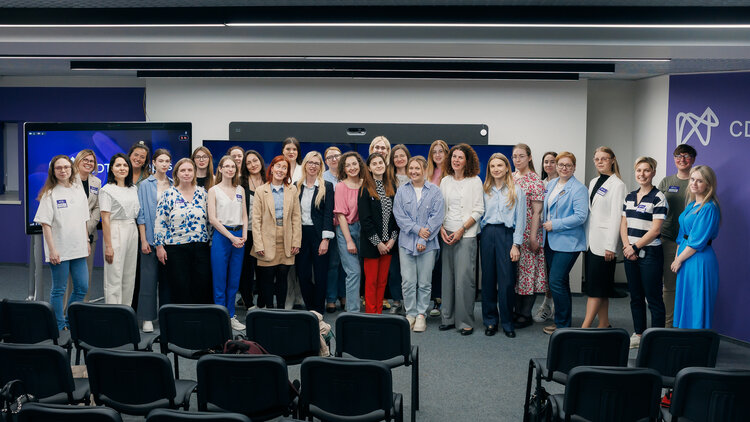
What is CDTO Campus and what makes the Ukrainian approach unique?
- How is training at CDTO Campus different from other digital transformation programs?
- There are no global institutions that fully train practical digital leaders for the public sector. There are programs for business, consultancy-style courses, and short training for public officials. But comprehensive programs simply don’t exist.
At a conference in the UK, I spoke with a woman who had just earned a degree in digital transformation. She said that over her 6.5 years of study, the tech landscape changed completely several times. In other words, by the time you finish learning, you're already behind – and have to start over.
Our approach is different. We provide all the knowledge needed for a CDTO, but in a much shorter time. These are not two-day intensives or professional development courses. We're talking about five or six months (depending on the program) of full-fledged training.
Most of our lecturers are Ukrainian experts actively working in the field of digital transformation. They bring real-world experience to the table. We also regularly invite international lecturers – especially those who understand the Ukrainian context well. That’s key: the training must be relevant to our legal framework and challenges.
We work with partners like Cisco, Microsoft, and AWS, and we're extremely selective about content. For us, a lecturer’s specialization and the relevance of their knowledge are non-negotiable.
Each participant comes with their own background and knowledge gaps. Some are strong leaders who need to strengthen their tech skills. Others have technical backgrounds and need to learn about leadership or communication.
We adapt the program to meet those needs – adding new lectures and content as necessary. But our overall goal is to provide a complete package: both soft skills and hard skills.
We don’t teach coding. Instead, we teach how to lead teams that know how to code, and how to choose the right technologies for implementation.
This program is not about technical execution – it’s about leadership, strategic thinking, vision, and the ability to deliver real transformation.
- What specific skills do participants gain after completing their studies at CDTO Campus? And essentially, what knowledge should a modern CDTO have to be effective?
- We don’t “force-feed” knowledge. We create opportunities. We provide tools, and it’s up to each person how deeply they master them. But every participant receives a “core” skill set:
- practical advice from people who have already implemented digital transformation in Ukraine and abroad;
- analysis of real cases, including mistakes: our speakers openly share what worked and what didn’t;
- participation of business representatives who share their experience of working with the government;
- immediately applicable knowledge: not theoretical but highly practical and grounded in reality;
- focus on action: many students launch their first projects while still studying.
Our ideal graduate is someone who understands how Ukraine achieved its digital breakthroughs and is ready to apply this knowledge. As a result, our alumni go on to launch new initiatives in their communities or institutions.
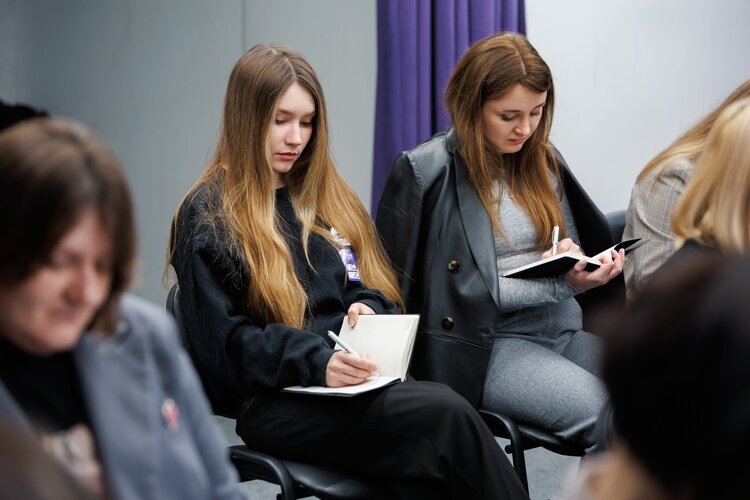
- Are there any standout examples?
- Many students launch their first projects during the course. Olena Hunko, CDTO of Lviv City Council, started developing a city mobile app while studying, and this project will soon become part of the Misto platform.
There are also cases from the state banking sector. One of our graduates, Andrii Malakhov, Head of the Transformation Office at Ukreximbank, implemented a chatbot assistant named Melania to handle user inquiries. It’s a strong example of automation in a government institution. It also shows how effective partnerships can be: we often become a “bridge” connecting people.
For instance, as part of the launch of the AI Center of Excellence, we introduced its leadership to relevant ministries and CDTOs, and now several exciting projects are underway.
Another case is Artem Rudko, CDTO of the State Statistics Service, who is working on integrating AI to process large volumes of statistical data. It’s a highly ambitious direction given the scale of data this agency handles.
A particularly notable story is that of Serhii Lypka, current head of the National Information System (NAIS), who is currently studying with us. This is especially important in the context of cybersecurity, given the past challenges with NAIS. We are proud that the new leadership is going through our program.
Among our graduates is Kateryna Frolova. She lived in the UK and worked at Twitter and Meta. Her return to Ukraine started with our program – she was looking for a way to adapt and transform. While studying with us, she launched a project to support children. Today, she leads the innovation piloting direction at the Global Government Technology Centre in Kyiv. Kateryna works actively at the international level, representing Ukraine in global digital initiatives. It’s an amazing feeling when someone in London asks me: “Is Katya your alum?” And I proudly answer: “Yes, she is.”
And there are more and more such cases. We see how people apply their knowledge right away, transforming institutions from within.
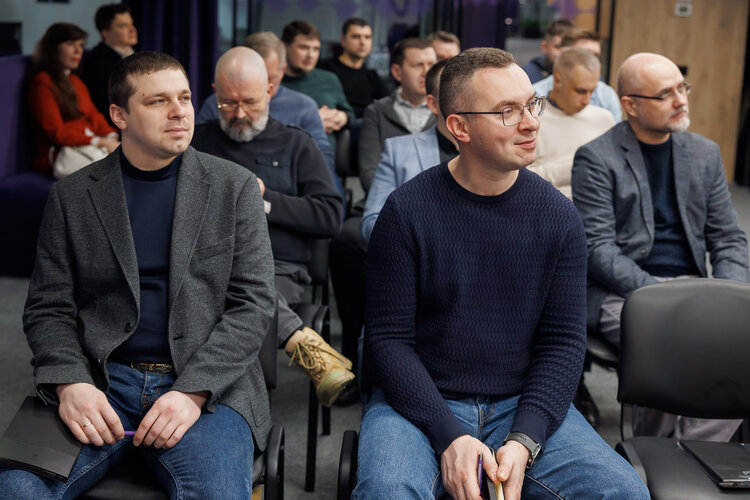
Who comes to study at CDTO Campus – and why this isn’t a place for ticking boxes
- Who are the people joining your programs? What’s their background, positions, and motivation?
- Very diverse. Statistically, more than half are already working in public service. But we also welcome those from other sectors who want to transition into government. These include:
- IT professionals,
- individuals with public sector experience but no exposure to digitalisation,
- representatives of civil society.
Background is not critical. What matters is having some professional experience and understanding of processes. We do not accept university students – only graduates who are ready to work.
- What’s the main selection criterion?
- The program is free for students, but admission is competitive. It’s supported by donors. The main goal is to train a CDTO who is either already driving change or ready to start doing so.
That’s why it’s crucial that applicants are motivated to implement change and work in the public sector. They also need to understand that they’re part of a broader process and should develop their own projects in synergy with others. Most importantly, they must be ready to serve the state.
For example, if someone says in the interview, “I want to work in business,” – then our program isn’t for them. We train people to strengthen the public sector. That’s what all our programs are about.
If someone wants to work in business or IT, they’d be better off choosing specialised courses. That path is already clear and doesn’t require deep knowledge of government processes, regulations, or legislative changes. If you’re not planning to work with those processes, why study them in depth? It’s perfectly logical. We always say openly: don’t waste time on knowledge you don’t intend to use.
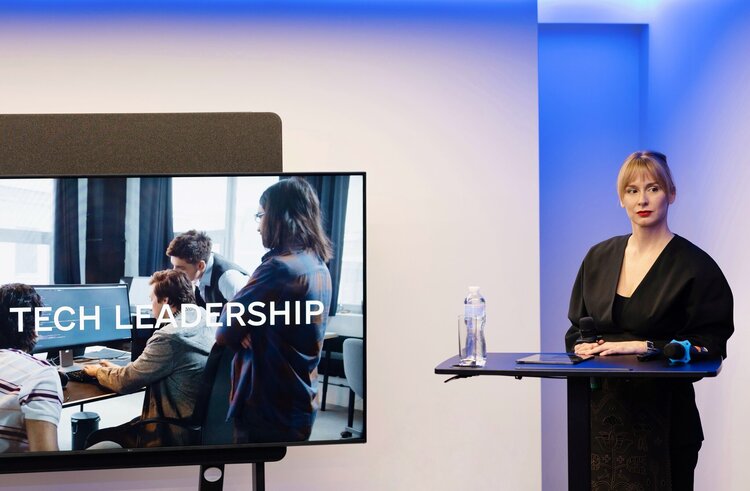
- So studying at CDTO Campus is always a conscious choice, not something assigned by a ministry?
- Absolutely. No one is sent here. We deliberately moved away from the academic credit system to avoid situations where someone is forced to take a theoretical course.
In just one year, CDTO Campus has gained a strong and solid reputation. That makes it a valuable opportunity – and civil servants understand that. We also have a system in place that allows both students and us to track learning outcomes. That means it’s not possible to skip a module or lecture here.
- Do you really track everything?
- Yes, we have our own user-friendly app that helps track progress. The goal is to ensure people are fully engaged in the process and can clearly see their results, return to materials and case studies whenever they need them.
- And how do participants respond? How competitive is the selection process?
- This system works very well. As for competition – the numbers vary depending on the program and direction. Sometimes we have up to 10 candidates per spot. We carefully select participants and interview them to assess their motivation and willingness to study. That’s why we don’t have random people in our courses. Those who are accepted know exactly why they’re here.
In just one year, we received 5,500 applications – that’s a lot. It shows that society is beginning to recognize that there’s a real pathway and opportunity to transition from business to the public sector.
- Do you have any goals related to graduates' employment?
- Yes, one of our KPIs is for at least 20% of graduates to go on to work in the public sector and become transformation leaders.
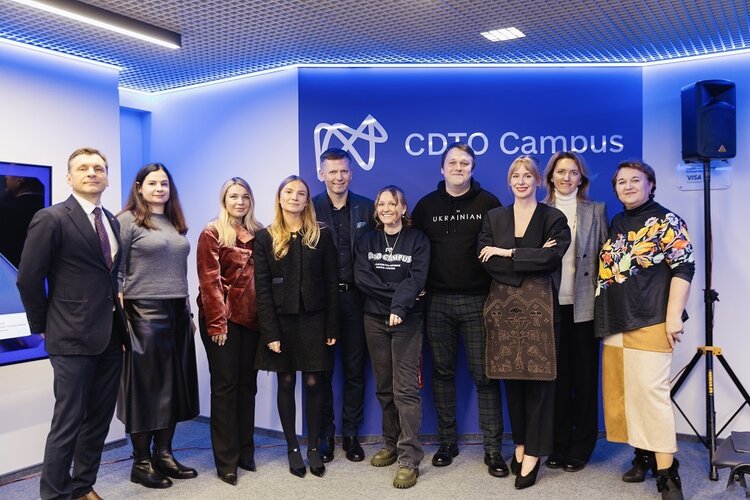
Is Ukraine planning to export the CDTO training experience?
- Could Ukraine’s model for training digital leaders become more than just a domestic case? How realistic is it to “export” this educational approach?
- Ukrainian digital services are gaining global recognition. For example, Time magazine recently listed the “Marriage Online” service as one of the inventions of the year.
Other countries are actively studying Ukraine’s experience and even starting to implement similar solutions. The world respects not just the functionality of our digital products, but also our speed of implementation and ability to adapt under wartime conditions.
That’s why we’re also preparing materials, case studies, and analysis about Ukraine’s digital transformation – to be ready to share this experience systematically. Almost every conversation we have with partners – even if it starts with inviting a lecturer – ends with a request for a full-fledged training program.
I hope that very soon we’ll reach the level where we can publicly announce the launch of international programs. Because even now, we’re becoming a source of expertise for other countries. And that’s something we’re truly proud of – driving change in the middle of a war and initiating reforms that make life easier for citizens and government alike.
We have a clear goal: to be number one globally in digitalization. Right now, Ukraine ranks fifth – and that’s already a very high position. But we’re not planning to stop there. This isn’t just about slogans; it’s about people who are ready to drive real change and take responsibility.
Digital leaders want the interaction between citizens and the state to be fast, efficient, and comfortable. It’s important to us that people feel the state cares about them – and that their experiences with public services are smooth and positive. That’s what we work for. That’s the kind of leaders we train. And we’re not stopping anytime soon.
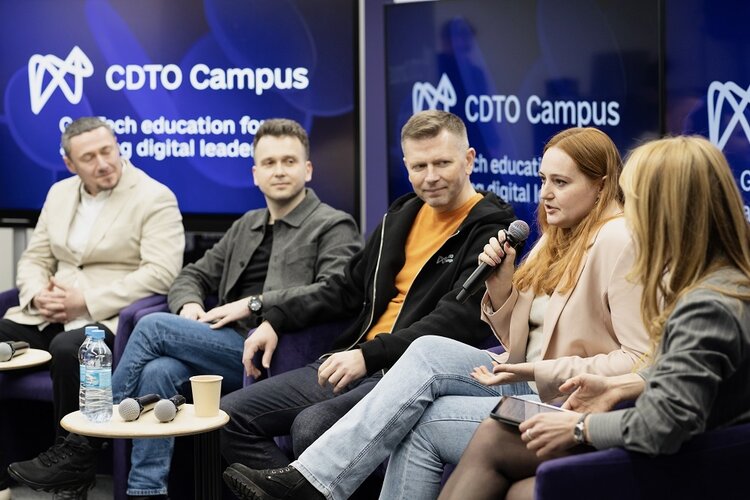
If you have read this article to the end, we hope that means it was useful for you.
We work to ensure that our journalistic and analytical work is of high quality, and we strive to perform it as competently as possible. This also requires financial independence. Support us for only UAH 196 per month.
Become a Mind subscriber for just USD 5 per month and support the development of independent business journalism!
You can unsubscribe at any time in your LIQPAY account or by sending us an email: [email protected]

